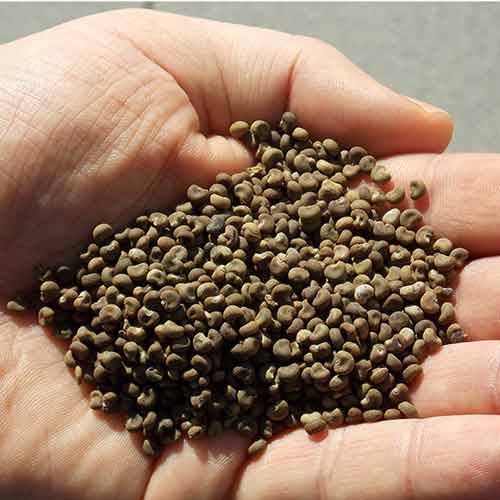Musk Seed CO2-se extract
Product-No.: 044.001
Raw Material:
Hibiscus abelmoschus – Seeds, dried
Production:
By supercritical fluid extraction with natural carbon dioxide, no solvent residues, no inorganic salts, no heavy metals, no reproducible microorganisms [1].
Ingredients:
see specification
Application:
Hibiscus abelmoschus is mainly used in Southeast Asia. Folk medicine uses the seeds there for snake bites, cramps, cramp-like stomach and intestinal diseases and for loss of appetite. In Chinese folk medicine the drug is used to treat headaches [2].*
The musk seed CO2 extract is used to flavour e.g. desserts, chocolate, pralines, confectionery, non-alcoholic and alcoholic beverages such as liqueurs and bitters [2].*
The common name of Hibiscus abelmoschus in India is Musk Dana or musk seed, as the smell has a certain similarity with animal musk. The characteristic musky scent of the seed oil is mainly caused by the ketone ambrettolide. The Musk Seed CO2 extract has a musky and amber-like, sweet, floral, woody scent profile with slightly animal leg notes. The product can be used in chypre, unisex and oriental perfumes, for example. As a fragrance, the extract is also suitable in other cosmetic products. Moreover, the extract has antibacterial effects e.g. against Bacillus subtilis and Streptococcus aureus [3].*
Literature:
[1] P. Manninen, E. Häivälä, S. Sarimo, H. Kallio : Distribution of microbes in supercritical CO2 extraction of sea buckthorn (Hippophae rhamnoides) oils : Zeitschrift für Lebensmitteluntersuchung und -Forschung / Springerverlag (1997) 204: 202-205
[2] Wolfgang Blascheck u.a. (Hrsg.) : HagerROM 2017, Hagers Enzyklopädie der Arzneistoffe und Drogen : Suttgart: Wissenschaftliche Verlagsgesellschaft Stuttgart, 2017
[3] Arokiyaraj S, Choi SH, Lee Y, Bharanidharan R, Hairul-Islam VI, Vijayakumar B, Oh YK, Dinesh-Kumar V, Vincent S, Kim KH : Characterization of ambrette seed oil and its mode of action in bacteria : Molecules. 29,20(1):384-95, Dec. 2014
